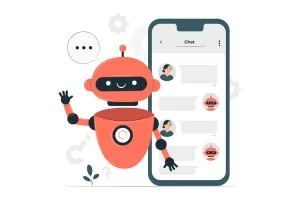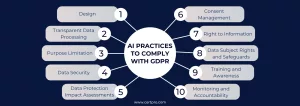AI and marketing: when AI becomes a community manager
In today’s digital era—where every second counts and consumers expect instant, personalized answers—artificial intelligence (AI) is redefining the rules of online communication. Indeed, AI and marketing seem to have become increasingly intertwined in recent years. Once at the heart of all human interactions with communities, community managers now share their role with powerful AI tools that automate, assist, and sometimes replace some of their responsibilities. But how is this transformation unfolding in practice? What are its benefits, limitations, and implications for brands, users, and multilingual communication specialists such as HI-COM?
AI at the Core of Modern Community Management
Traditionally, the role of a community manager involved content creation, audience engagement, crisis management, and performance analysis. Today, much of this work can be partially or entirely automated through AI.
Chatbots—virtual assistants capable of holding conversations in natural language—have become pioneers in this shift. They answer FAQs, guide users to the right services, and operate 24/7. Behind the scenes, more advanced AI tools analyze sentiment, predict trending topics, and suggest optimal posting times.

This automation allows community managers to focus on strategy, creativity, and complex cases requiring a human touch – saving valuable time, especially in international or multilingual contexts.
The Power of Large-Scale Personalization
What makes AI particularly powerful in community management is its ability to personalize interactions at scale. By analyzing behavioral and conversational data, AI tools can adapt tone, style, and content accordingly.
For instance, a user who frequently visits an online baby store might receive tailored product suggestions, targeted messages, or exclusive discounts—automatically delivered by a bot. This level of personalization significantly improves user experience, increases loyalty, and boosts conversion rates.

For global companies, multilingual bots play a vital role. Solutions like those offered by HI-COM combine AI-driven conversational bots with high-quality, contextualized translations to ensure linguistic accuracy in every language.
Bots and AI on Websites: Global Assistance, Real-Time Support
AI’s impact goes beyond social media. On websites, intelligent bots serve as digital assistants. They guide visitors, answer questions in real time, suggest products, and facilitate navigation.

On an e-commerce platform, for example, an AI chatbot can handle the entire conversion funnel—from product selection to payment assistance and order tracking. By analyzing user behavior, these assistants adapt their messaging to meet individual needs.
From a UX perspective, this reduces bounce rates and increases time spent on site—key indicators for SEO and overall site performance. Platforms like Intercom, Drift, or Zendesk leverage AI to automate up to 80% of customer service responses.
Case Study 1: B&B Hotels – AI as Internal and External Support
B&B Hotels, a budget hotel chain, provides a compelling example of AI’s dual role. In collaboration with Crisp and Google Dialogflow, the brand launched an intelligent assistant for both customer-facing service and internal hotel management support.
This chatbot draws from a centralized knowledge base to answer queries about reservations, cancellation policies, current offers, and logistics. The result? Significant time-savings for staff and faster, more consistent service for guests.
Case Study 2: H&M and the Smart Handling of Peak Traffic
Faced with major seasonal surges, global fashion retailer H&M turned to AI to streamline its customer service. A chatbot was introduced to manage routine inquiries such as product returns, item availability, and delivery times.
Using machine learning, the bot has refined its responses over time. H&M successfully reduced average response times and maintained high customer satisfaction levels—even during high-traffic periods.
Limits and Ethical Considerations
Despite its many advantages, AI in community management also raises important questions. Transparency is key: users must know when they are interacting with a machine. The European Union is actively working on AI legislation to ensure traceability and data privacy.

Another challenge is managing sensitive cases. A bot cannot display empathy or defuse a crisis like an experienced human can. Automation should not replace human involvement but rather support it intelligently.
For multilingual companies, the quality of machine translations is also a concern. This is where specialists like HI-COM add real value—ensuring consistent terminology, cultural nuance, and linguistic fluency where bots often fall short.
AI and Translation Professions: Competitors or Allies?
At first glance, AI might seem to threaten traditional translation and interpretation roles. But in reality, it’s a powerful ally when well managed. AI can pre-translate content, which human translators then refine with accuracy and nuance. This synergy is especially useful in multilingual community management, where even automated messages must reflect local culture and linguistic precision.
Conclusion: AI for More Agile Communication
AI’s integration into community management represents a natural evolution in brand–consumer relationships. Far from replacing humans entirely, AI is becoming a strategic co-pilot—capable of managing urgency, ensuring round-the-clock presence, and delivering a level of personalization previously difficult to achieve at scale.
In a globalized world, this transformation can only succeed when paired with clear, consistent, and multilingual communication. The true power of this digital shift lies in the synergy between AI, human expertise, and linguistic know-how—precisely the value that companies like HI-COM bring to the table.




